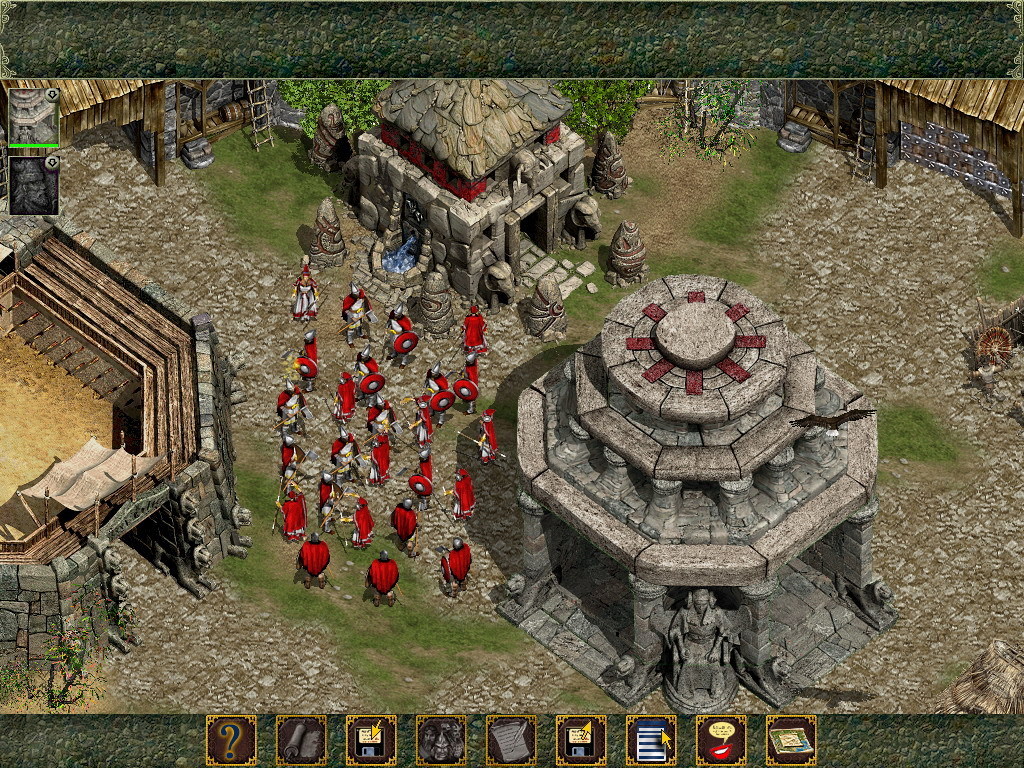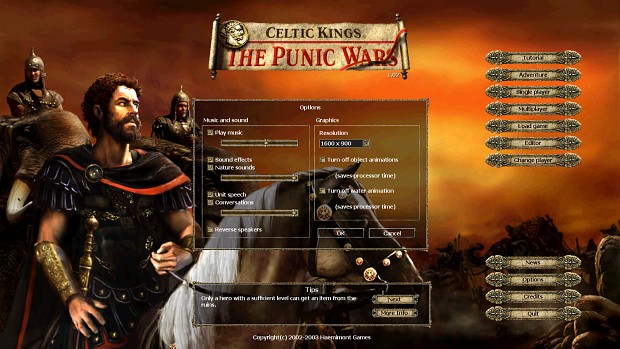

It's a very solid multiplayer game because of the focus on the military. On the tougher levels, it's a real bear that is sure to give veteran real-time strategy gamers a tough test.īut if solo play isn't your cup of tea, the multiplayer support is first rate. On the easy mode, it's a breeze and presents very little challenge. What makes Nemesis of the Roman Empire truly stand out, however, is the artificial intelligence. It's just another example of the game's elegant design. Your units are represented as colored dots and it looks like a mini-wargame in this regard. The maps are very large, and you can issue orders from the overview map, which keeps the game manageable. The game is played in real-time, and there's no way to pause and give orders, but you can slow the pace of the game to almost a crawl so there's no haphazard frantic feel you find in some real-time titles. For example, the Iberians are all about defense while the Gauls are more about brute force. The good news is that each faction is unique and focuses on a specific style of play. The new factions bring the total to a whopping four (Carthaginians, Iberians, Gauls, and Romans). It's a great way to keep things organized. When the hero moves, all the archers follow. So you can have a hero control 50 archers, for instance. A very handy design feature is that you can assign units to a hero's banner. Heroes lead your armies into battle and provide bonuses as their level increases. It adds a lot of strategy to the game and forces you to plan attacks rather than just sending a mob of units across the continent. If you send an army across a huge map without any food or on a path that has no friendly villages along the way to support them - they're dead meat. This puts a premium on conquering these neutral sites early in the game to keep a supply chain of sorts. On each map there are villages, forts, and other camps that house food supplies (as well as units) and you may send food to them via a supply mule. On paper, this sounds like a major hassle, but in practice it works rather well. A starving army is a dead army, and you need to keep your units supplied or they'll slowly lose hit points. Food (the only resource in the game aside from gold) is vital in greasing the wheels or your military machine.
NEMESIS OF THE ROMAN EMPIRE SEQUEL UPGRADE
That said - you need to do more than just upgrade your units and recruit them en masse. There are no peasants in the game at all, so you don't need to worry about how many idle workers you have sitting around. The only thing you ever spend money on is the buying and upgrading of units. It's unique in its design that there is no base building whatsoever. Nemesis is a blend of real-time strategy and role-playing, with a dash of wargaming tossed in for good measure. You get two new factions, the Carthaginians and the Iberians, more unit upgrades, and a few gameplay enhancements. Nemesis of the Roman Empire is more of a mini-sequel than it is a full-blown second installment to the critically acclaimed Celtic Kings. Multiplayer games support up to eight competitors, across the Internet or a local network, and feature a scenario editor and random map generation. The Teutons return also, in both single- and multiplayer sessions, as a neutral faction prone to attacking any who cross its borders. In multiplayer skirmishes, players can choose to command the forces of one of four ancient nations - the Romans, Carthaginians, Gauls, or Iberians - each offering different inherent strengths and weakness. Commanding the Romans through their campaign, players work to expand and develop the republic throughout the Punic wars, leading their forces through the invasion of Sicily, the conquest of Hispaniola, and the razing of Carthage. Following the history of Hannibal Barca, players can lead the Carthaginians through the Sagunto battle, the famous crossing of the Alps, and the Cannas battle.


The game offers two story-lined campaigns, allowing players to win the world from either throne. Beginning immediately after the ending of conflicts of the first game, Nemesis of the Roman Empire focuses on the struggle for ultimate world power between the Romans and the Carthaginians. This historical strategy game is a sequel to Haemimont's Celtic Kings: Rage of War.


 0 kommentar(er)
0 kommentar(er)
